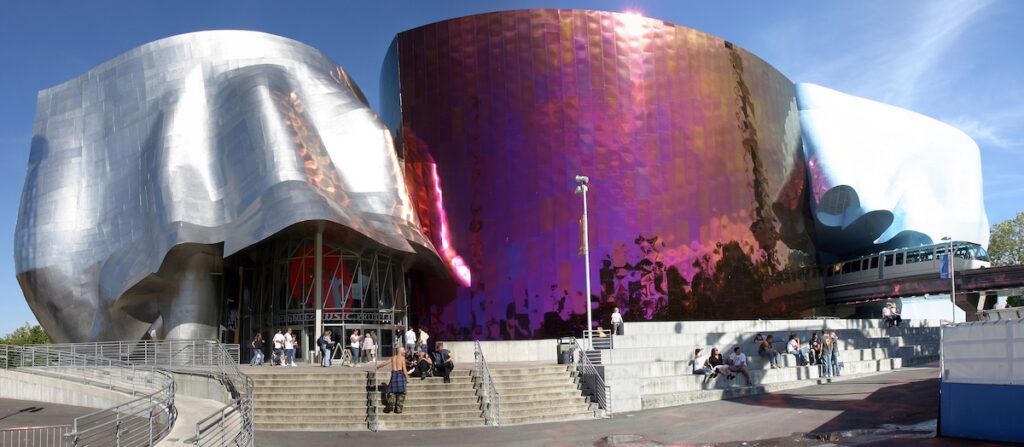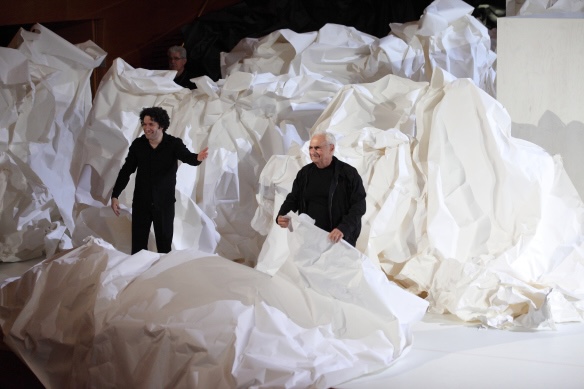
Seattle’s Museum of Pop Culture (formerly known as the Experience Music Project) was designed by Frank Gehry. The inspiration behind the building was a smashed guitar, in honor of Seattle’s Jimi Hendrix. Gehry purchased several electric guitars, sliced them into pieces, and used them as building blocks for an early model design.
Three-thousand panels, made up of 21 thousand individually cut and shaped stainless steel and painted aluminum shingles, encase the outside of the building. Their individual finishes respond to different light conditions and appear to change when viewed from different angles, reminding audiences that music and culture is constantly evolving.
The exterior undulates in parts and the top of the red section is meant to look like guitar frets. The building has brought on a mixed response of admiration and derision. This is true for many of his buildings. Gehry is not satisfied with traditional design and his works defy categorization—which leads to the ambiguity of criticism.
Like Wright, I think Gehry has intuited the fractal nature of the world. The Euclidean approximations that we have used since buildings began aren’t necessarily the only way to construct a building. With the freedom offered to us with new materials and also with new design and construction techniques, it is easier than ever to change the shape of a structure. Gehry has taken advantage of these. For instance, traditional methods of handling the loads of a building are calculated with CATIA, a software used at Boeing that analyzes the stresses and strains of airplanes.
Fractal Dimension of Crumpled Paper
As I’ve discussed in previous posts, fractals take on a dimension between the Euclidean dimensions. Natural, 3-dimensional objects fall within 2.0 and 3.0 rather than the Euclidean 3rd dimension. According to a study by Zhang, Samal and Brandle, the investigation of the fractal dimension of three different tree crowns ranges 2.24 to 2.45. Study: A Method for Estimating Fractal Dimension of Tree Crowns from Digital Images. Link to the study.
What is very interesting is that the Hausdorff (fractal) dimensions of a crumpled sheet of paper is 2.5, which is very close to a tree’s fractal dimension. From Wikipedia:
When crumpling sheets of different sizes but made of the same type of paper and with the same aspect ratio (for example, different sizes in the ISO 216 A series), then the diameter of the balls so obtained elevated to a non-integer exponent between 2 and 3 will be approximately proportional to the area of the sheets from which the balls have been made. Creases will form at all size scales (see Universality (dynamical systems)).

Crumpled paper is the inspiration for some of Frank Gehry’s work, including the set for Don Giovanni performed by the Los Angeles Philharmonic in 2012.
From Don Lauritzen.
See also Barry Berkus YouTube video where he sketches based on a crumpled sheet of paper:
This is the link if the video is not embedded in your browser.
The natural shapes emerging from modern architecture and design, look to me at least, to be a recreation of the natural world. Gehry and Berkus have intuited the fractal nature of the world and are implementing it in their works.